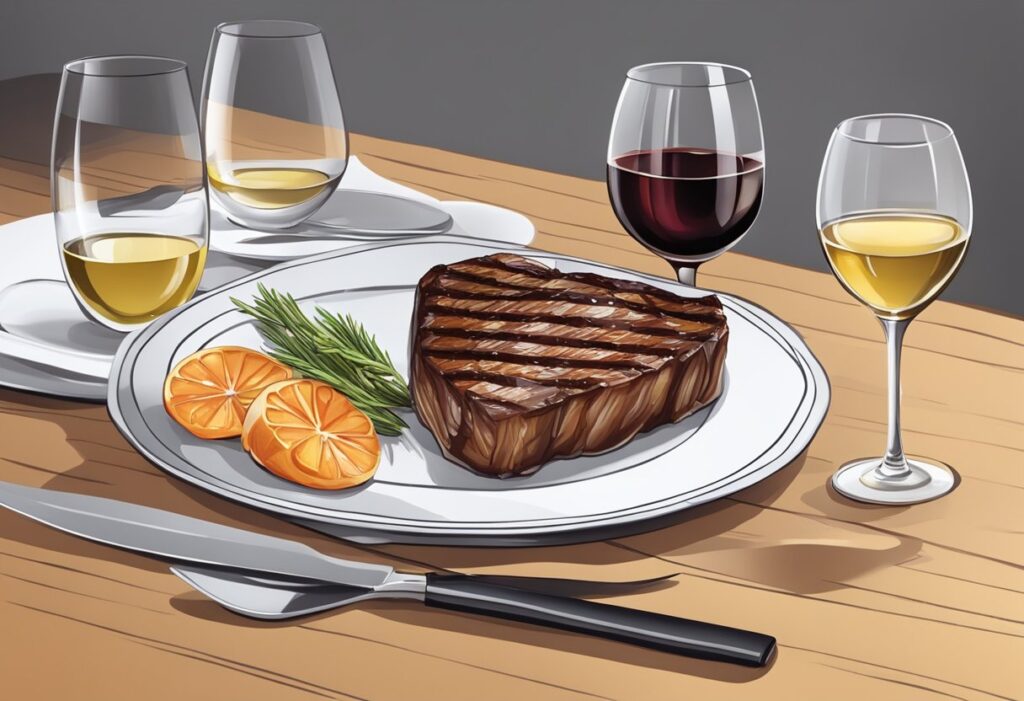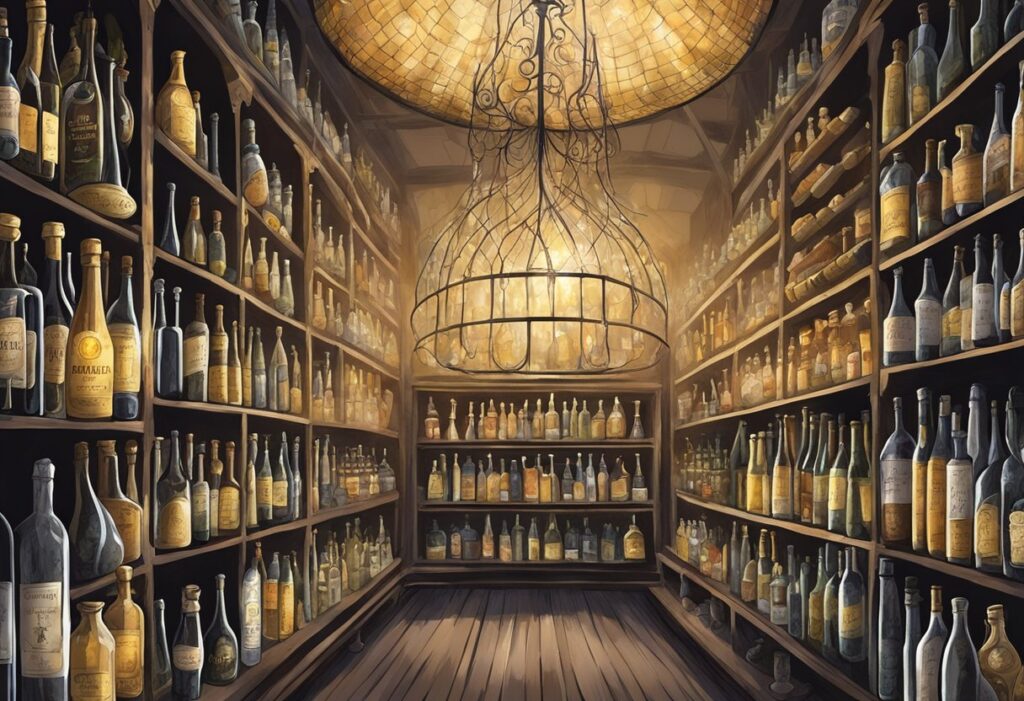Many people enjoy wine, yet a lot of myths surround it. Understanding the truth behind these myths can enhance the wine experience and help wine lovers make better choices.

From serving temperatures to aging capabilities, misconceptions can lead to confusion.
Shedding light on these myths helps everyone appreciate wine more fully.
1) “Wine should always be decanted” – not necessarily! Some wines benefit more than others.
Decanting wine is a popular practice, but it isn’t always required.
Some wines, especially young ones, can taste better right from the bottle. They don’t need the extra air that decanting provides.
On the other hand, older wines can benefit from decanting because it helps separate them from sediment. It also allows the wine to breathe, enhancing its flavors.
Not every wine needs decanting. Each type has its unique characteristics. Some may taste just fine without it, while others shine with a good decant.
2) “Old wine is always better” – a common misconception! Fresh and young wines can be delightful.

Many people believe that older wines are always better. This is not true for every bottle. Some wines are meant to be enjoyed young.
Fresh wines often have vibrant fruit flavors and a lively taste. These characteristics can make young wines very appealing.
As wines age, their flavors can change. Some may lose their fruity notes.
Younger wines can pair well with many foods. They can be refreshing and easy to drink.
It’s important to explore both young and old wines to find personal favorites.
Wine tasting is all about discovering new experiences. Enjoying fresh wines can be just as delightful as savoring older vintages. Everyone has different tastes, so there is no right or wrong choice.
3) “Red wine with meat, white with fish” – Don’t be afraid to mix and match!

Many people believe that red wine pairs only with meat and white wine with fish. While these rules can be helpful, they are not strict.
It’s perfectly fine to enjoy a light red wine with fish or a rich white wine with a steak. Personal preference plays a big role in wine pairing.
Exploring different combinations can lead to delightful surprises. Trying something new can enhance the dining experience and bring out unique flavors in both the food and the wine.
So, don’t hesitate to mix and match! Taste is subjective, and the best pairing is the one you enjoy the most.
Still confused? Learn how to choose the right wine for any occasion.
4) “Wine gets better with age” – Not all wines! Some are best when consumed sooner.
Many people believe that all wine improves as it ages. This is a common myth.
In reality, most wines are made to be enjoyed within a few years of their release.
Lighter wines, like many whites, should ideally be consumed fresh.
Even some reds are best when consumed young. They offer vibrant flavors that can fade over time.
Certain wines, like high-quality reds or vintage port, can improve with age. Yet, it’s important to know that not every bottle is meant for the cellar.
5) “Screw caps mean cheap wine” – Not true! Quality wines can have screw tops.

Many people believe that a screw cap signals a cheap wine. This idea is outdated and not true.
In fact, many high-quality wines now use screw caps. They help keep the wine fresh and prevent cork taint. This taint can spoil the wine and ruin the drinking experience.
Wineries have found that screw caps can provide better preservation. Thus, choosing a wine with a screw cap does not mean it is of lower quality. It focuses more on how well the wine is made.
So, next time you see a screw cap, remember it can still be a fine wine!
6) “Red wines need to be served at room temperature” – Often too warm! Slightly cooler is best.
Many people believe red wines must be served at room temperature. This idea often leads to serving the wine too warm.
In reality, red wines can taste better when slightly cooler. The ideal temperature for red wine is often in the range of 55°F to 65°F.
Serving wine around this temperature can enhance its flavors and aromas. Wine drinkers might find that they enjoy their favorite reds more when they are not overly warm.
Next time someone says to serve red wine at room temperature, they might want to consider chilling it a bit instead.
7) “Wines should always breathe before serving” – Not all need it! Some are best straight from the bottle.

Many people think all wines need to breathe before serving. This is not true.
While some red wines improve with aeration, others do not.
White wines and some lighter reds taste great right from the bottle. They may lose their freshness if allowed to sit too long.
It’s best to check the wine type. Then, decide if it benefits from breathing. Each bottle is unique, so enjoy exploring what works best!
8) “Sweet wines are just dessert wines” – Sweet wines can complement spicy dishes too.
Many people think sweet wines are only for dessert. This is not true. Sweet wines can actually pair very well with spicy dishes.
The sweetness in these wines helps balance the heat of spicy foods. It can make the meal more enjoyable.
For example, a sweet Riesling or Gewürztraminer can match well with spicy Asian cuisine. This combination can create a pleasant taste that enhances both the food and the wine.
So, it’s a good idea to try sweet wines with savory and spicy meals. You might be surprised by how well they work together.
9) “Expensive wine is always better” – Price doesn’t always equal quality!

Many people believe that expensive wine is automatically better.
However, quality does not always come with a high price tag.
There are many affordable wines that offer great taste and enjoyment.
Wine lovers can find excellent options at various price points.
Exploring different wines can be a fun and rewarding experience.
10) “French wine is the best” – Every region has its gems! Explore the world.

Many people believe that French wine is the best. However, France isn’t the only place producing great wines.
Italy, Spain, and Australia also have incredible wines that deserve attention. Each region offers unique flavors and styles. For example, Italian Chianti has its charm, while Spanish Rioja showcases bold characters.
And don’t forget about the American wine regions, especially the California wine regions. While they haven’t been producing wine nearly as long as some of these old European regions, they can certainly compete.
When exploring wine, it’s fun to visit lesser-known regions. Places like South Africa and New Zealand are gaining popularity too. Each has its own special wines waiting to be discovered.
Enjoying wine from around the world can open new experiences. There are gems in every country that can surprise any palate. So, step out and explore!

